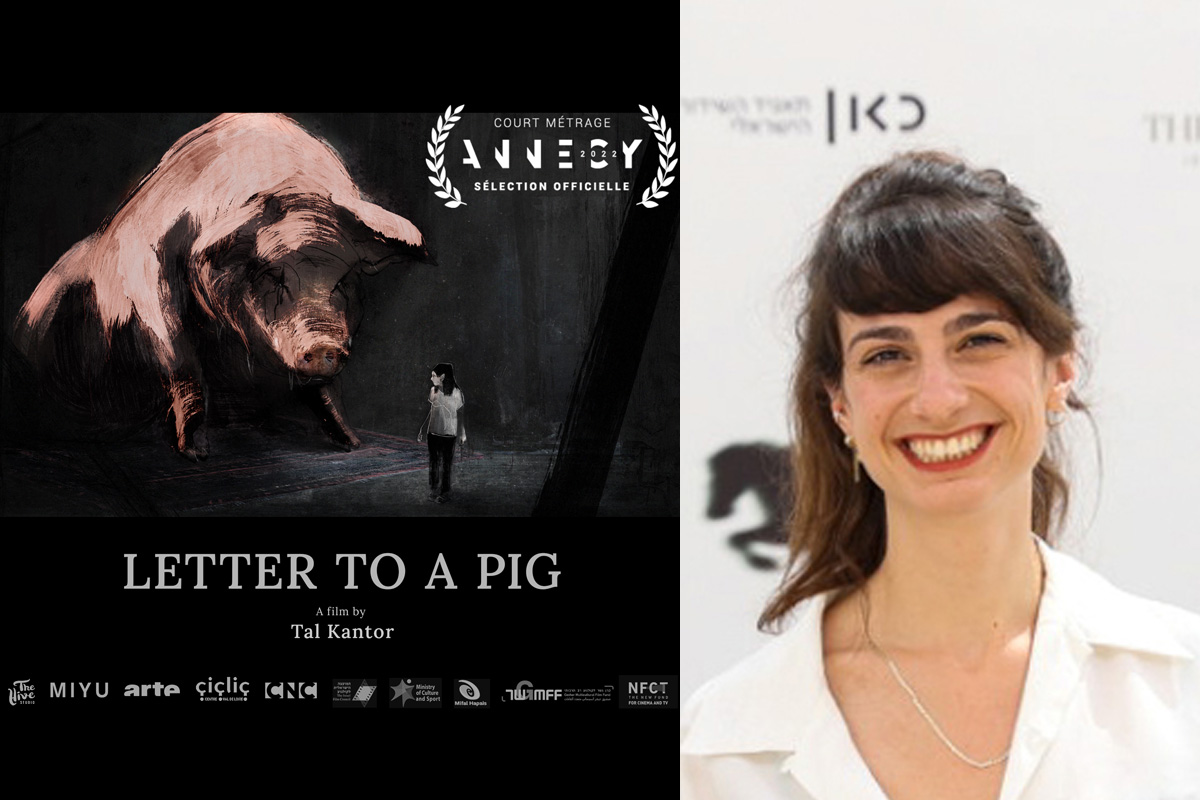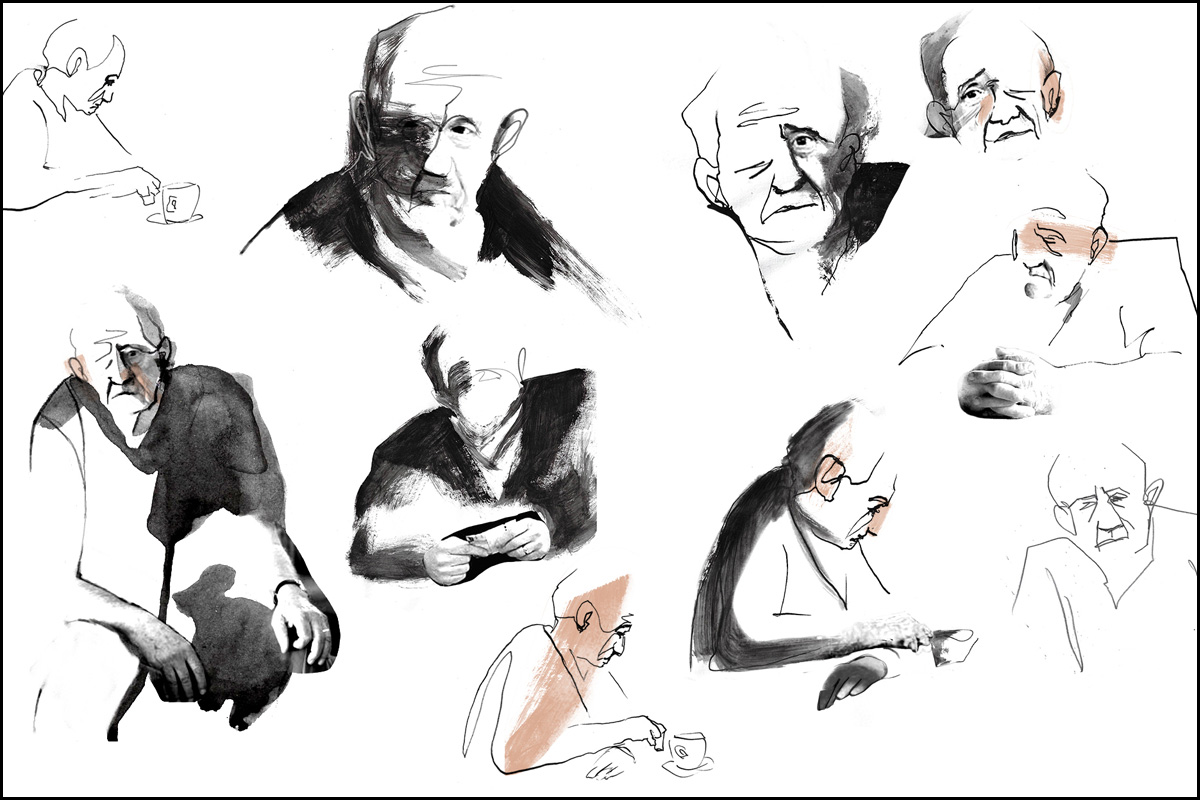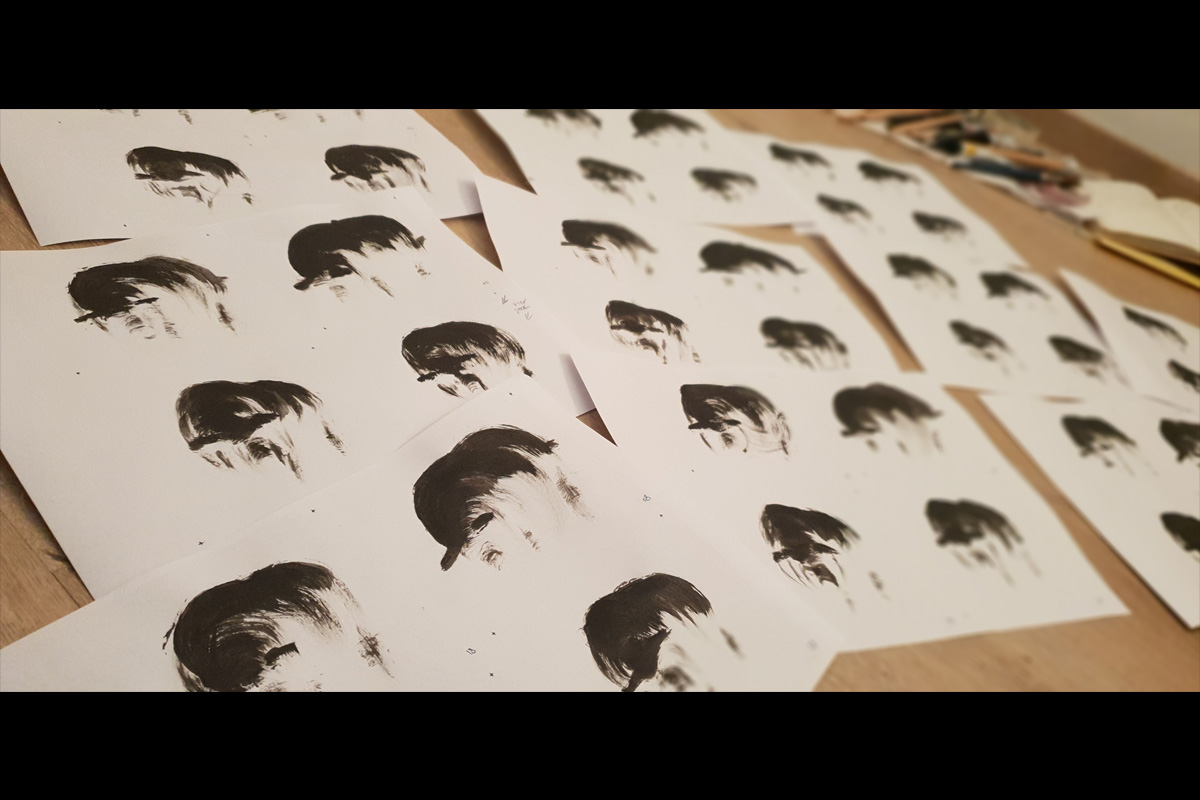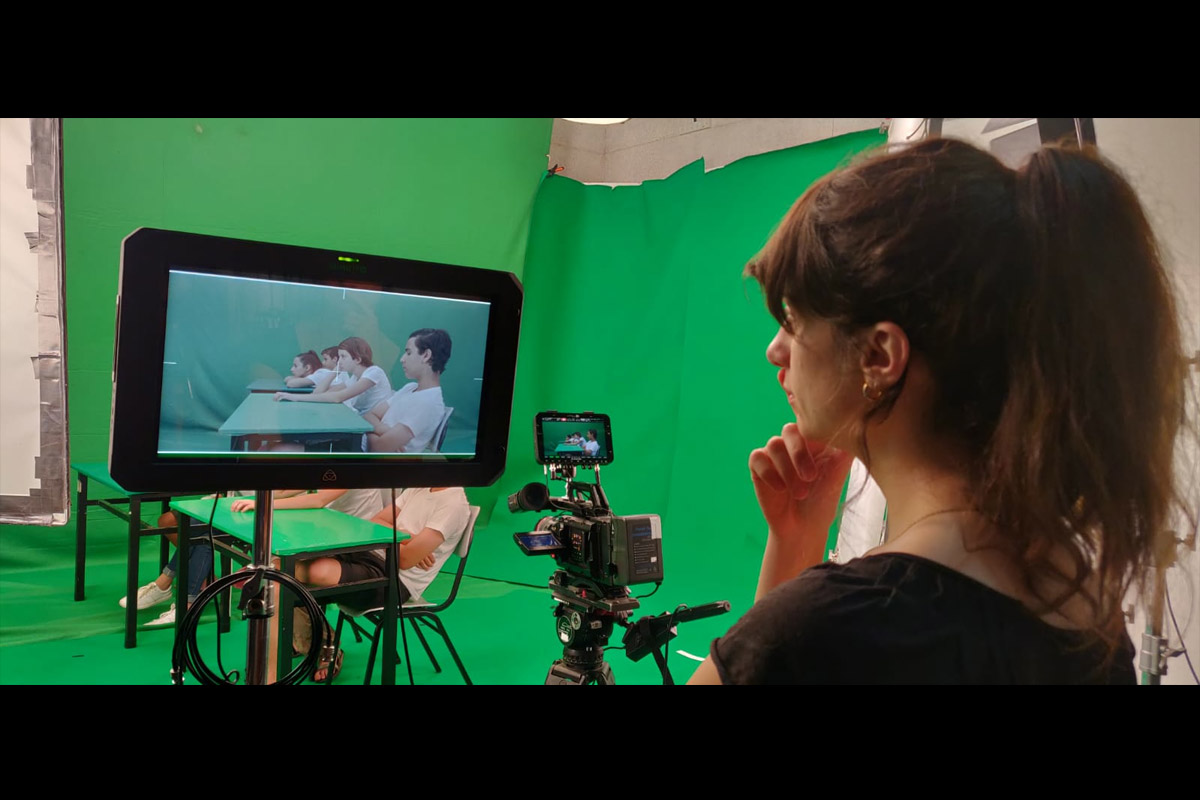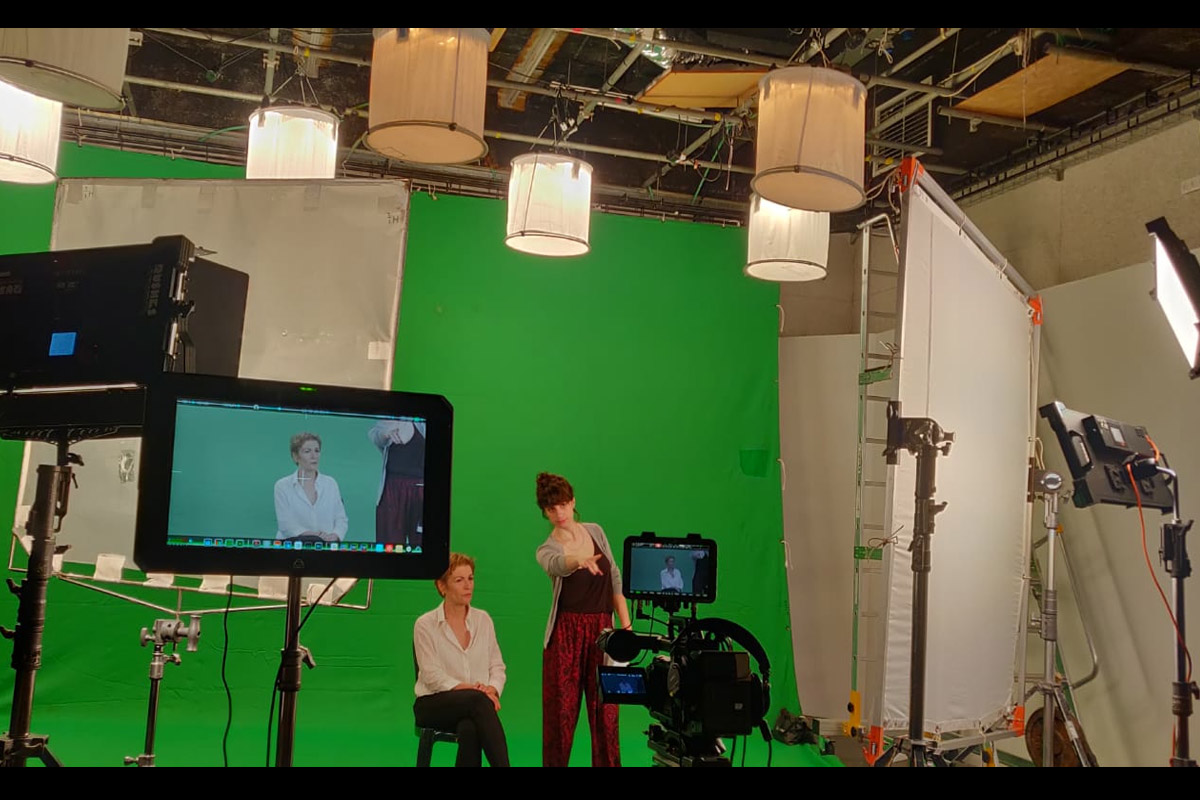Synopsis
A Holocaust survivor reads a letter he wrote to the pig who saved his life. A young schoolgirl hears his testimony in class and sinks into a twisted dream where she confronts questions of identity, collective trauma, and the extremes of human nature.
Film Credit
Director: Tal Kantor
Screenplay: Tal Kantor
Animation: Meton Joffily, Anne Kraehn, and Tal Kantor
Music: Pierre Oberkampf
Production: Miyu Productions (France), The Hive Studio (Israel)
Technique: 2D Animation / Animation on paper / Mixed media / Rotoscoping / Live action
Running time: 16′ 47”
Letter to a Pig is an animated short film, which depicts a girl’s internal experience in a dream after some students, including her, listened to a story experienced by an elderly Holocaust survivor.
The film achieves impressive visual expressions by effectively uniting rotoscoped 2D animation with live action visual materials. It is a strong and simple visual presentation, which helps us feel the characters’ will and presence powerfully, and to focus solely on the story throughout the film. It makes a strong and direct appeal to us by clearly exposing the root of recurring wars and genocides which humanity continues to face.
The film has been making its global journey around the prestigious international film festivals, along with winning several awards such as the Zlatko Grgić (Award for best first film production apart from educational institutions) at Animafest Zagreb 2022, Best Narrative Short award at Ottawa International Animation Festival 2022, and Best Narrative Short award at The Ophir Awards (Israeli Academy Awards) 2022.
We interviewed Tal Kantor, the director of the film, on the story behind the film’s creation.
Interview with Tal Kantor
Hideki Nagaishi (HN): Where did the initial idea of the film come from? And how did the short film project start?
Tal Kantor: The film is based on my personal experience as a young schoolgirl: a memorable encounter I had with a holocaust survivor many years ago, and an unforgettable dream that followed.
The main part of the Holocaust Memorial Days in the public school system in Israel is when holocaust survivors come and share their stories with the students. This is a regular part of the curriculum. Therefore, as children, we were exposed to some of the darkest atrocities committed by mankind, which are hard to comprehend at any age.
I remember feeling sad listening to those stories, or in a way compelled to feel sad. Year in and year out, we became somewhat numb to what we heard.
But one year, I really did feel sad, or somehow truly troubled, when a holocaust survivor came to our class and read to us a letter he wrote to a pig he believed saved his life.
After that encounter, I had a meaningful twisted dream that revealed deep questions about my identity and about the dark baggage I subconsciously carry. A dream that stayed with me all those years and eventually became an urge to create this film.
I would say the journey began on Mifa pitches in Annecy 2017, where I pitched the concept of the film and received a production grant from Ciclic Animation in France. This made the film an Israeli-French co-production (Miyu Production & The Hive Studio) that took overall, including development & production, almost 4 years to make.

HN: What do you want to deliver to the audience the most through this film?
Tal Kantor: I’d like to invite the audience to reflect on the wounds that go with us as a society and as individuals on our historical narratives and what we bequeath above and below the surface to the younger generation.
And perhaps invite reflection and a different perspective on all of this, from a place of healing and compassion.
HN: In this film, the scene depicting the students’ attitude toward an old Holocaust survivor has made me think about the importance of understanding what is preventing the next generation from being considerate to the hardship of people who have lived through war and genocide.
Is that scene based on something that actually happened? And what did you take care in the most to create that scene?
Tal Kantor: The scene here is fictional, based on my memories and observing students in class and on the memorial days at school. It was important to me to convey the complexity and layers that exist in a class: the gap between the generations and the inability to understand the magnitude of the horror, together with the discomfort of the kids from the difficult stories, or even the boredom of hearing them every year; and to capture the childishness and innocence, and the place that listens and absorbs everything.
All these together exist and create this complex fabric called “a class” or “a group”.
It’s a scene that required delicate directing, since only the survivor is the one who speaks, and everything that happens with the kids in the classroom is passed through body gestures and small facial expressions, above and below the surface – what they react to immediately and what seeps into their subconscious.
HN: What was the biggest difficulty you’ve faced in developing the film’s entire story from the initial idea?
Tal Kantor: The challenge was mainly in the script and storyboard stage. Questions such as: how to fit into a short film of around 10 minutes a story about such a big and dark subject, how to touch on a topic that has already been talked about a lot and treated quite a bit in cinema, but from a personal and different angle, and how to preserve the core of what moved me in my personal story, and at the same time to not be afraid of changing the script for what is right for the film.
It was a challenging process to condense the essence of what is important to convey in the plot and message, without falling into too much backstory details. And of course, there was also the personal difficulty of researching and engaging for such a long time in these dark and painful contents, such as writing by myself a monologue of a Holocaust survivor.
HN: This film’s visual style is calm but strong-willed: a unique fusion of 2D animation and live action, and restrained visual details of characters and backgrounds, a similiar visual style to we can see in your film In Other Words (2016).
How did you come up with this form of visual expression, and what were your intentions behind it?
Tal Kantor: Originally, I was looking for a visual language that would express my love for drawing, animation, photography, and poetry. This is how the technique I invented in In Other Words was born, a kind of greedy hybrid that I invented, to work with all these mediums together.
But beyond that, this language mainly allows me to play and express the elusive place between reality and memory/fantasy. To show the inner emotional world of the characters also in their visuals appearance – by the design and movement in animation.
To imitate the mechanism of memory: what we remember precisely and in detail, compared to what remains blurred and fluid, when an expressive line expresses anger, when it is gentle and almost disappears out of shame or fear, and when a dark and heavy stain covers the survivor’s face as he talks about his pain and anger.
HN: In addition to previous question, how did you decide which parts of live-action visual elements would not be animated via rotoscoping? And how did you naturally integrate the animation with the live-action visual elements?
Tal Kantor: For each character in the film I had to choose what their inner essence was and how it would be expressed visually. For example, at points in the film where the eyes are the main organ that expresses and communicates, compared to when the mouth takes the center of attention, and so the rest of the details are less important. And according to this, I built the design and key frames for the animation for each and every shot, for every moment and its emotional essence in the film.
For example, the moment when no child listens to the survivor, Haim, in the classroom, and then he only appears as a contour line without details. Compared to the moment when the girl, Alma, begins to listen to him and connect to what he is telling, and then his face is gradually revealed, both in video and with color. So, this can illustrate the subjective point of view, where we turn our attention to something in front of us, and discover it has more details and nuances that we did not notice before.
HN: What did you take care in the most and what was the most difficult challenge when you shot the live action part of the film?
Tal Kantor: It was important to me to connect the actors to the moment and the emotion in each scene. That they will authentically express small and reliable gestures, that will bring something human and specific. That’s why I spoke and rehearse a lot with the actors and especially with the children: I used guided imagination exercises and play while filming. To connect them to their own experience as children in parallel situations.
But the biggest challenge all along was to film the pigs. To wallow in the mud with them and try to take the right shots. Pigs are lovely animals, but they are of course not actors, and it is very difficult to direct them, like telling them to move right or left or when to look at the camera to get the shot that is in the storyboard.
So, it required improvisation on-site, to work with how the pigs move and what they want and bring during the filming.
HN: All the music in the film was impressive for me because each piece of music enhances the atmosphere of each scene well. Could you let us know the story behind the creation of the music with Pierre Oberkampf?
Tal Kantor: Working with Pierre, who is such a talented, sensitive and intelligent composer, was a huge pleasure!
We analyzed together the course of the film, such as what is the emotional arc and energetic essence of each section. Or which musical sections echos later in the film in a different variation. Or which musical instruments express the characters and the course of the story accurately – for example, the flute that accompanies the girl protagonist, Alma, who is dreamy and gentle. Or the texture of the piano that accompanies the pig in the classroom, which Pierre and I found suitable for the brushstrokes and the flickering paint.
We aimed to find music and a combination of instruments that would contain, for example, the duality and complexity that the character of the pig brings with it in the film.
Pierre skillfully managed to understand my abstract descriptions, and even from a distance in a Zoom call during the COVID-19 pandemic, he translated them into layers of complex emotion that were so accurate to what I wished.


